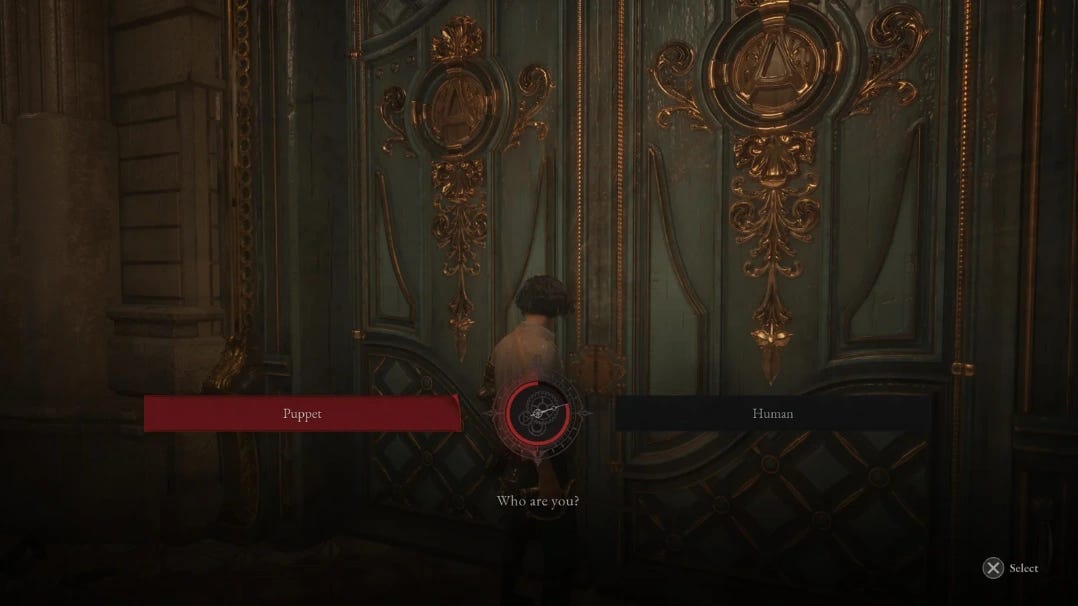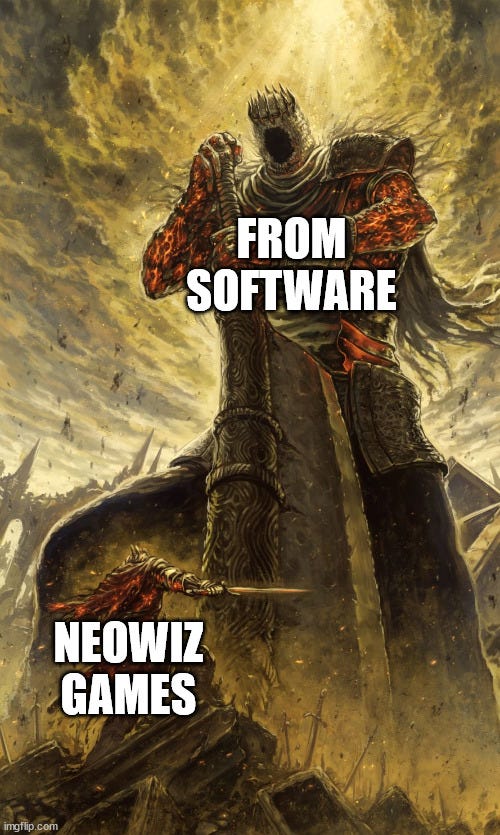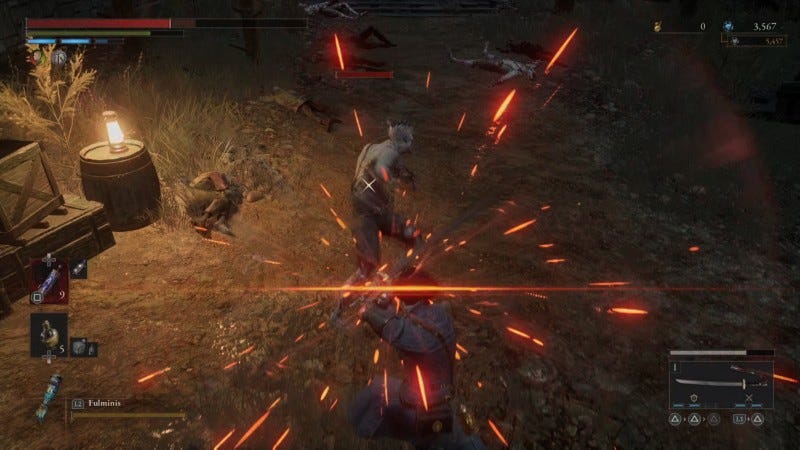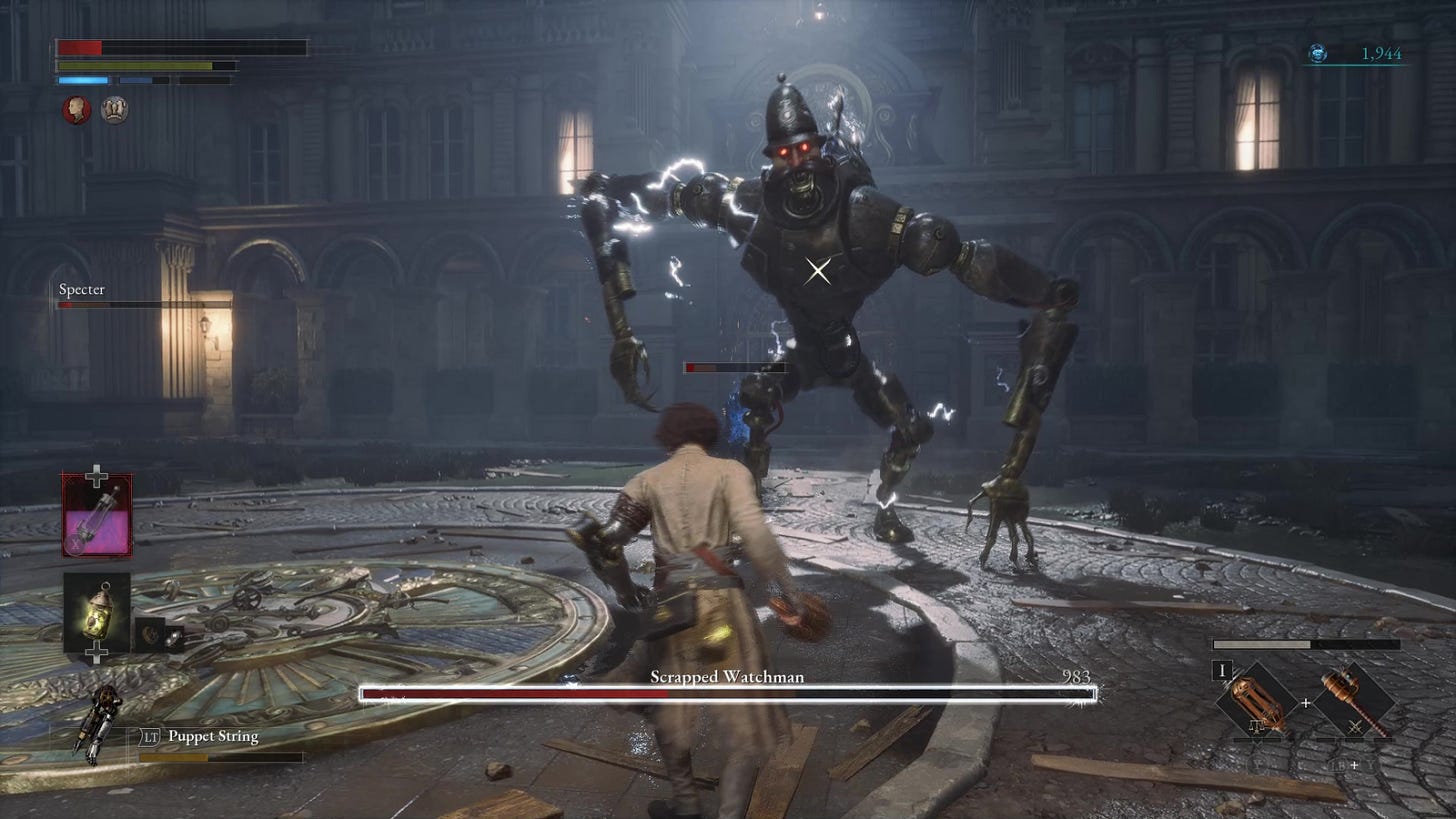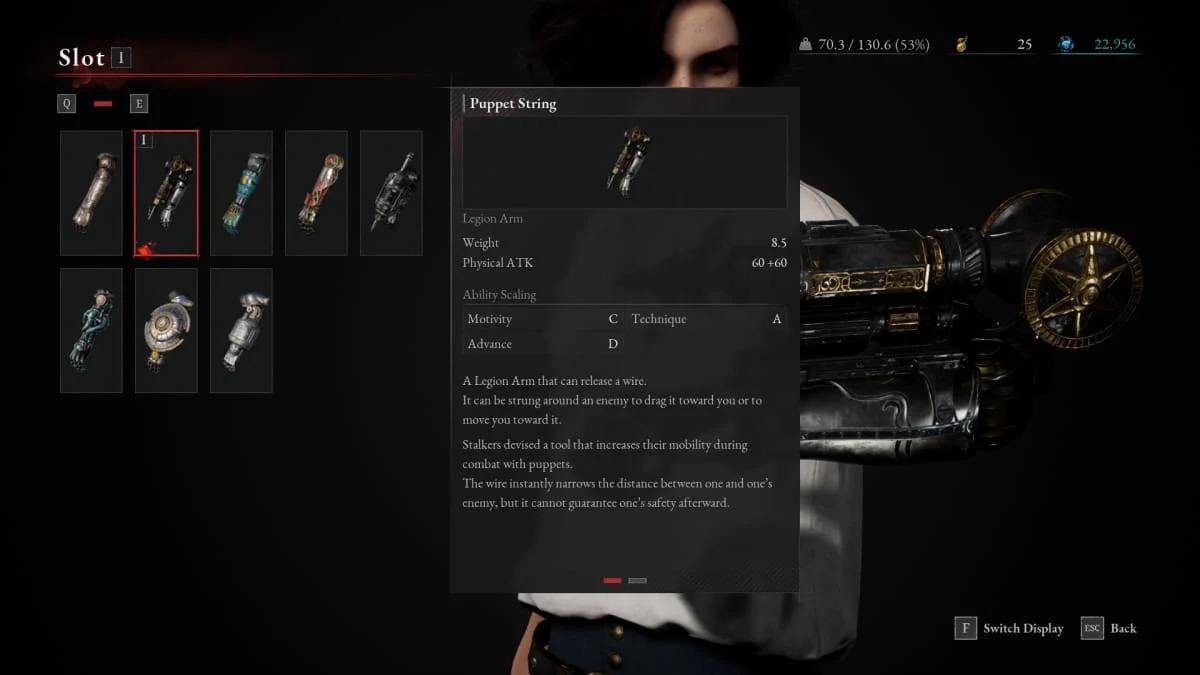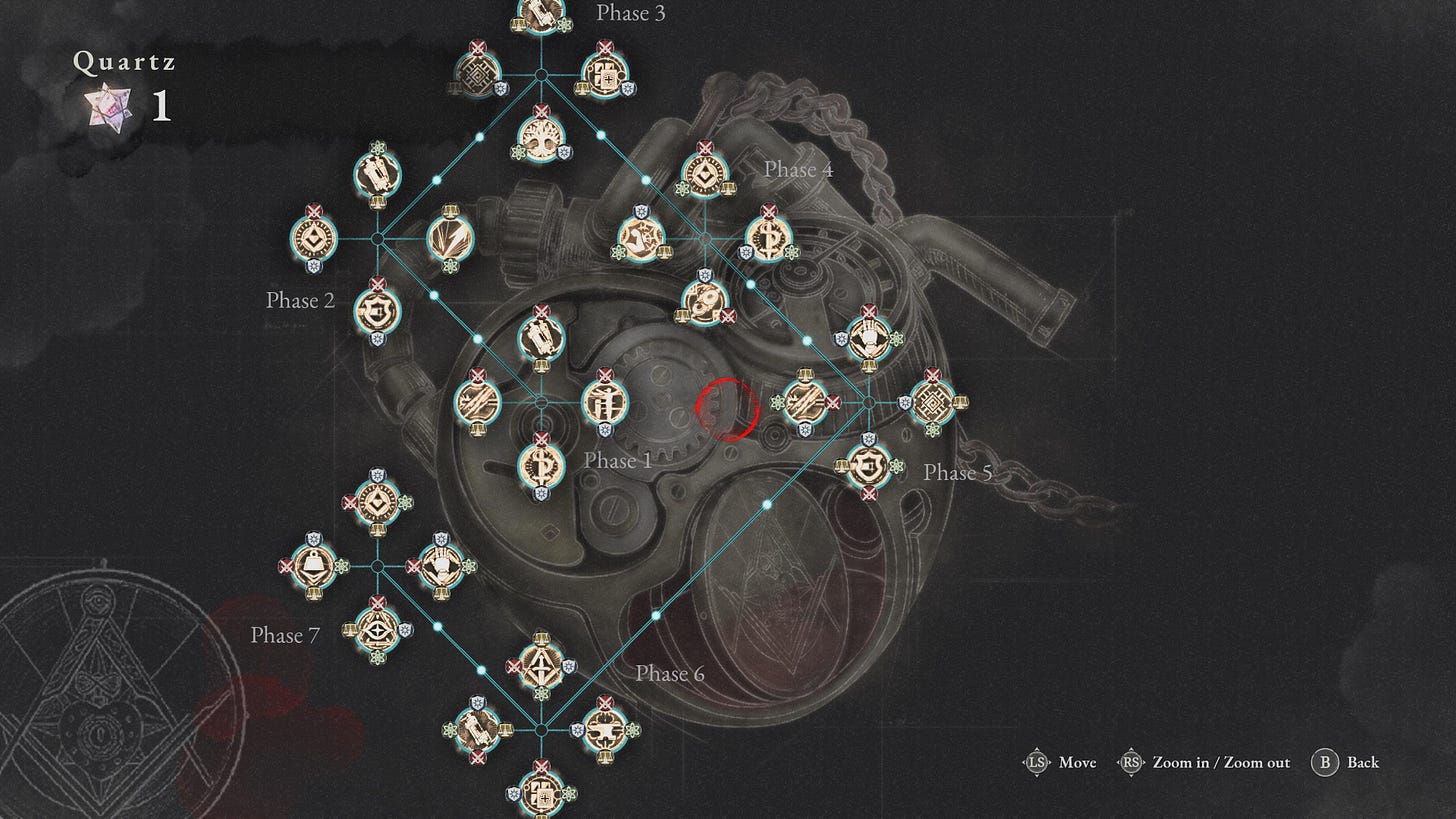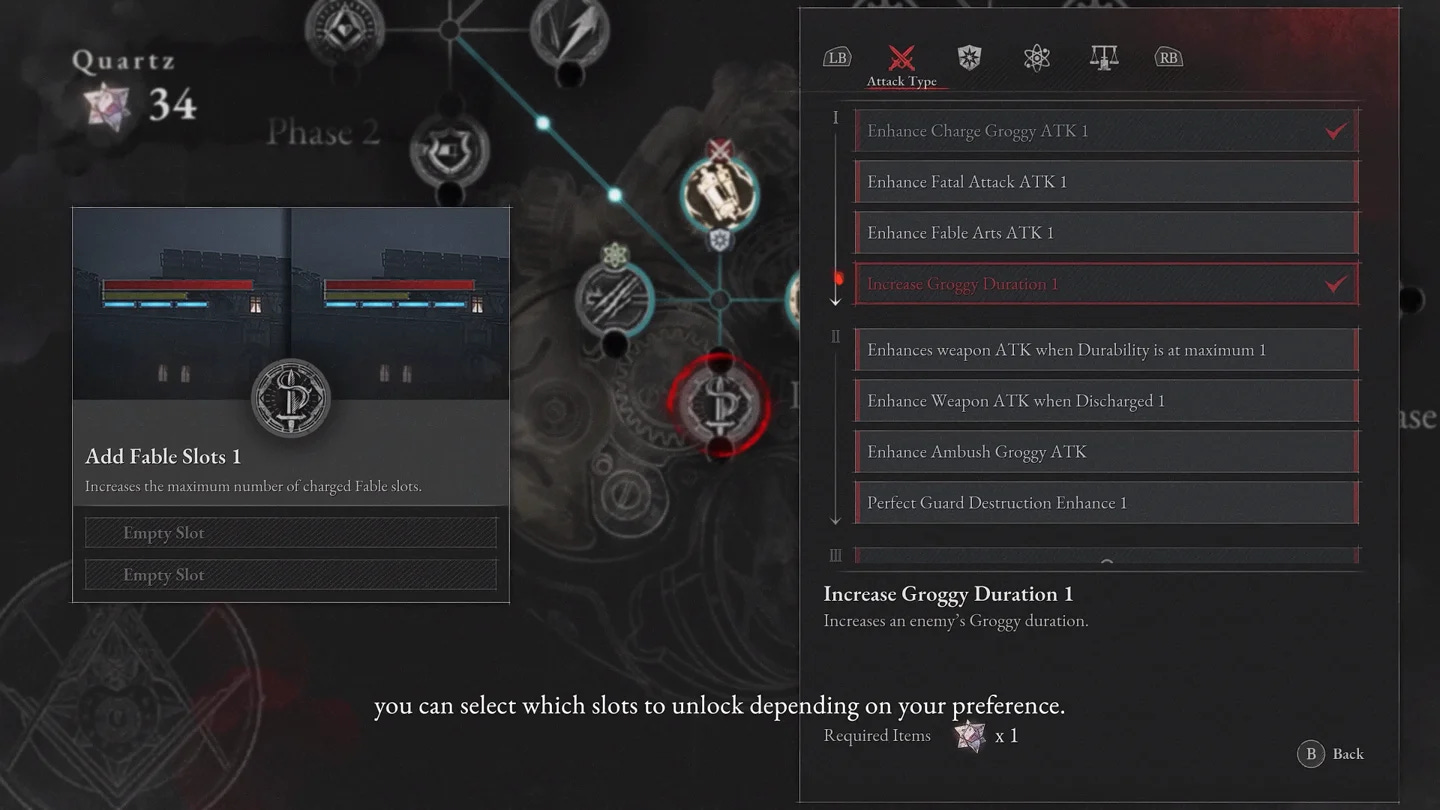This year, I began a full journey down the rabbit hole of gaming that has collectively been coined Soulslikes. Prior to falling down this rabbit hole, I had dabbled with Dark Souls 3 and Bloodborne (I dabbled in Sekiro as well, but Star Wars Jedi Fallen Order had come out just as I started that game, and I never looked back. I’m a Star Wars nerd, I was contractually obligated,) but I had never really gotten past the first level. I found the games to just be too difficult at the time. However, the reality of the matter was that I had absolutely zero patience, and I got frustrated easily.
Well, it took me a year (and 2 controllers), but I finally broke down that wall and completed my first Soulslike, and ever since, I have been HOOKED!
I was completely enthralled by the setting and design of Elden Ring. From Software’s approach to building a narrative is one that perfectly threads the needle between overly vague and mysterious and too dense and expositioney. From Software gives the player the tools necessary to understand what is happening in their games, and then lets the player piece together the main narrative through very tightly designed levels with incredible environmental storytelling, item descriptions, cryptic NPC conversations, and weird, creepily endearing laughs.
Like any wildly popular thing, it’s sure to inspire a slew of products inspired by it. And that can mean it’s hard to stick out from the pack. Lies of P is full of the hallmarks of a classic From Software experience that many Soulslikes go for. A combat system that is deep in its simplicity, a setting that is far past its prime years and is in a state of decay (City of Krat), and a bundle of quests that require you to pay close attention so as to get the true narrative experience. But what Lies of P does to differentiate itself from the herd of mediocrity is asking one simple question.
What Does It Mean To Be Human?
That one question is at the beating heart of the entire game. Anyone who has ever picked up a fairy tale book or seen Shrek will know that that question is the driving force of Carlo Collodi’s story The Adventures of Pinocchio. Neowiz adapts the story of Pinocchio and mixes it with touches of Isaac Asimov’s Three Laws of Robotics.
Where in the original tale, Pinocchio is constantly encouraged to listen to and obey his father, Geppetto by the Talking Cricket (later referred to as Gemini Cricket in pop culture) as that is what good real boys do. Lies of P twists this approach on its head.
In the Three Laws of Robotics, the laws are as follows:
A robot may not injure a human being or, through inaction, allow a human being to come to harm.
A robot must obey orders given it by human beings except where such orders would conflict with the First Law.
A robot must protect its own existence as long as such protection does not conflict with the First or Second Law.
Lies of P’s Laws of the Puppets are as follows:
First law: All puppets must obey their creator's commands.
Second law: A puppet may not harm a human.
Third law: A puppet must protect and serve humans and the city of Krat.
Fourth law: A puppet cannot lie.
While the first three laws are very important to the game and its narrative, The Fourth Law is truly the beating heart of the game. Lying is something a puppet should not be able to do as it does not have the soul to. Within every living thing in the City of Krat, there is a substance called Ergo. It powers everything and is found in everyone. Puppets, machines, humans, it all goes. Ergo within humans forms a soul, but in Puppets, it does not.
Or at least, it should not.
The thing that is forbidden for all puppets to do is the very thing that we are encouraged to do for the entirety of the game. To even get into Hotel Krat, the hub world of the game, we must lie to the door.
Lying is not only encouraged as a way to progress in the game but it is rewarded. The more you lie, the more human you become. You can literally hear the effects of this in the game as the sounds P makes when injured or exerting himself change from being more mechanical and puppetlike at the start to more human and realistic toward the end. Lies of P wants you to break the rules. It wants you to be rebellious. It wants you to think for yourself about what the right choice really is. Only those who do exactly what their masters, fathers, or mothers say are truly considered evil. Those who do not think for themselves are just lifeless puppets.
This can be considered a major deviation from the source material that Lies of P draws from, but it couldn’t be more in line with the spirit of being human that Carlo Collodi was aiming for with his original tale.
Without delving into main story spoilers, and I greatly encourage you to play the game for yourself to uncover all the heartbreaking and heartwarming stories it has to offer, there are many sidequests in which we witness moments where the truth would cause far more harm than good. You can save a dying woman from the pain of living just a few more prolonged years and let her pass peacefully. You can let a blind old lady live out the remainder of her days in happiness, believing that her child is alive and well and in her arms. Sometimes, the alternatives only cause more pain and suffering, and the same can be said for almost every decision presented to the player throughout the course of this narrative. Sometimes, there really is no good option between the two, so you must decide whether or not the lie would benefit the person more than the truth.
Lies of P’s main narrative is a beautifully crafted story that conveys great themes of what it is to be human, told through an incredibly captivating world and amazingly faithful adaptation of Carlo Collodi’s beloved tale.
A Maze Of Soulslikes
There are a million and one games based on From Software’s premier titles. Many have tried to recapture the magic of that style of game. However, very few tend to stick the landing. There’s a certain je ne sais quoi From Software injects into their games that just can’t seem to be replicated.
Soulslikes tend only to be able to capture one specific part of what makes From Software’s games so special. Failing on even one level of the From Software package is enough to send any Soulslike spiraling into the realm of mediocrity. And while Neowiz managed to capture the sais quoi, where did they land on the je ne part?
How does Neowiz Games avoid the pitfalls that swallowed previous games, and how does it shape up in the face of From Software?
Crafting The Perfect Puppet
Neowiz Games looked at all of From Software’s previous outings and decided simply just to do what they did but with a twist. If it ain’t broke, don’t fix it, and add to it.
There’s elements of From Software’s design philosophy in every inch of this game. The combat of Lies of P takes the Rally System from Bloodborne, where when damaged, a player can regain a chunk of health by hitting any enemy within a certain margin of time or before they are hit again and mixes it with Sekiro Shadows Die Twice’s Parry and Posture systems to create the Guard Regain system. In the Guard Regain system, if the player is attacked while they block, they will take damage and stamina depletion (blocking while stamina is completely depleted will leave the player staggered) but will be able to recover that health by attacking back or Perfect Guarding (seen below).
However, as I learned the hard way—in the middle of a boss fight that I totally should’ve won, by the way—the damage taken can still kill you. This is where Perfect Guarding really shines as the most satisfying mechanic in the game. Perfect Guarding occurs when you press the Guard button at the right time. Perfect Guarding is the main road to success in this game.
While Lies of P does have a dodge and dodge roll, the player is far safer Guarding due to Guard Regain and the inclusion of Fury Attacks. Fury Attacks are attacks that cannot be dodged rolled through, nor can they be Guarded against. They need to either be completely avoided or Perfect Guarded. While Perfect Guarding will still deplete a small amount of stamina, it will protect you from all damage and, in some cases, will break the enemy’s weapon, reducing their damage output by half and dealing substantial stagger damage to your opponent.
Stagger (seen below) is Lies of P’s equivalent to Sekiro’s Posture Breaks and Dark Soul’s Ripostes. Successful Staggers have a handful of triggers, be it from hitting the boss repeatedly with normal attacks, Charge Attacks, Fable Arts, or Perfect Guards. When finally triggered, the enemy’s health bar will be outlined in white for a few moments. Landing a successful Fable Art or Charge Attack will knock the enemy down and leave them open to a Fatal Attack.
Fatal attacks will deal substantial damage and also inflict non-recoverable damage on enemies. All enemies come packaged with their own version of Guard Regain as well. Something Lies of P does incredibly well is tick-for-tack game design. If the Player can do something to the enemies like, say breaking their weapon or staggering them and leaving them open to big damage? Yup, the enemies can do the same to the Player! In the images above, in the bottom right corner, there is a bar half-filled. That’s right, it’s Weapon Durability!
On top of the Player also being susceptible to staggering, their weapons can shatter if they don’t pay attention and repair them via the Grind. Every attack and block will chip away at your durability until nothing but a broken blade remains in your hand. However, you are in luck as Lies of P’s Weapon Assembly system (seen below) gives you the ability to mitigate the durability factor!
Do you want to be a fast and nimble fighter capable of bonking your enemy to death with a giant wrench before they even knew what hit them? Slap a wrench on top of a rapier handle and bonk away! Do you want to sweep up the streets of Krat City faster than a Roomba? Stick a saber on the end of your Booster Glaive handle for some wide-reaching horizontal attacks!
The number of weapon combinations in this game is staggering, and it really lets the player craft the type of playstyle they want. A long-running criticism of From Software’s titles is that players aren’t often able to try out different weapons. Or maybe there’s a weapon that you really like the move set of, but it’s just not compatible with the build you have been running for the majority of the game. Lies of P’s solution is quite elegant, and it fits perfectly into the framework of the game’s setting.
Unfortunately, there’s only one caveat to this system and it is that the weapons received for selling the Boss Ergo, Lies of P’s equivalent to a Boss Soul, can’t utilize this system. They are set weapons with specific abilities that can’t be mixed and matched. However, these weapons are all extremely fun and viable to use. And, like the standard weapons, they are able to be crafted to fit into whatever build you are currently rocking.
Finally, for the combat, the Legion Arms (seen below), Lies of P’s equivalent to the Shinobi Prosthetics from Sekiro, is probably the only combat mechanic that Neowiz didn’t alter or mix up too much. The Puppet Arms are all super fun and hold a wide range of utility.
The Legion Arms are really fun as, at their first level, they all serve only one purpose and are quite rigid in that purpose. But the more you upgrade them with Legion Calibers, the more utility they gain. Arms like the Fulminis and Falcon Eyes that lack mobility are made more maneuverable, such as the ability to move while charging an attack and the ability to fire while dodging. Arms that lack offensive capabilities, like the Aegis Shield, Deus Ex Machina, and Puppet String, are given offensive options that can be quite deadly, like a charging punch after a block that can stagger the enemy, the ability to put even more landmines in the ground that deal even more damage, and the ability to zoom in for a deadly acrobatic attack. And then some arms, like the Flamberge and Pandemonium, just get much better at doing what they do: applying status effects in a larger area.
All of the Legion Arms are viable options regardless of the build you decide to run. It all depends on what your preferred playstyle is. Do you like to run in and out of combat as fast as possible and pull enemies toward you? Use the Puppet String. If applying damage over time is your jam, the Pandemonium and Flamberge are the ways to go. If you like being an immovable object, the Aegis Shield is perfect. Do you prefer for your enemies to be dead before they even get to you? Use the Falcon Eyes to pick them off one by one, or use the Deus Ex Machina to litter the walkway with mines!
Finally, the most unique additions to this game lie in the Pulse Cells system and the P-Organs. The Pulse Cells is Lies of P’s answer to the Estus Flask system created by From Software. Where this system differs is in how it operates when the Pulse Cells are completely depleted. Normally, in From Software’s games and many other Soulslikes, when you use all your healing items, that’s it. You are done until you find a save point or some NPC lands a lucky shot and gets sent to NPC heaven. For Lies of P when your Pulse Cells are discharged, dealing damage or Perfect Guarding will allow you to replenish 1 Pulse Cell.
This may not seem like much on paper, but when you are brought down to the wire against a boss and are just a few hits away from winning, this can really save your patootie. It also emphasizes the importance of Perfect Guarding, and you can recharge your Pulse Cells faster via upgrades in the P-Organs.
Functioning as P’s actual heart, the P-Organ is an upgradeable skill tree that offers a wide variety of bonuses ranging from more Guard Regain on attack or Perfect Guard to a dodge that can be linked together with another to allow for safer evasive movement to granting a larger staggerable window and to increasing the quantity of Pulse Cells. Each upgrade node also harbors smaller upgrades that can be applied through the cost of 1 Quartz.
In order to gain access to abilities like the Link Dodge or an increase in Pulse Cells, you must fully unlock the node by slotting different modifiers. These modifiers range from various Attack, Survival, Ability, and Item type upgrades. Enhancing the damage that your Fatal Attacks do, increasing the amount of health recovered by Pulse Cells, increasing the amount of Legion Arm abilities you can do, or increasing the amount of consumables you can carry. It’s a system that is truly open and free for the player to experiment with.
A Real Boy
Neowiz did an incredible job crafting Lies of P. Its combat feels perfectly in line with what makes From Software’s combat systems so engaging while also emphasizing a new style of play that’s unique to itself. The world and narrative are rich and compelling, with a thought-provoking question at the core that drives it to the finish line. There’s no part of the game that feels derivative of the games that inspired its creation.
Lies of P is a game that really doesn’t have any strings on it. And I can’t wait to see where Neowiz takes this game next with the DLC and sequel!





